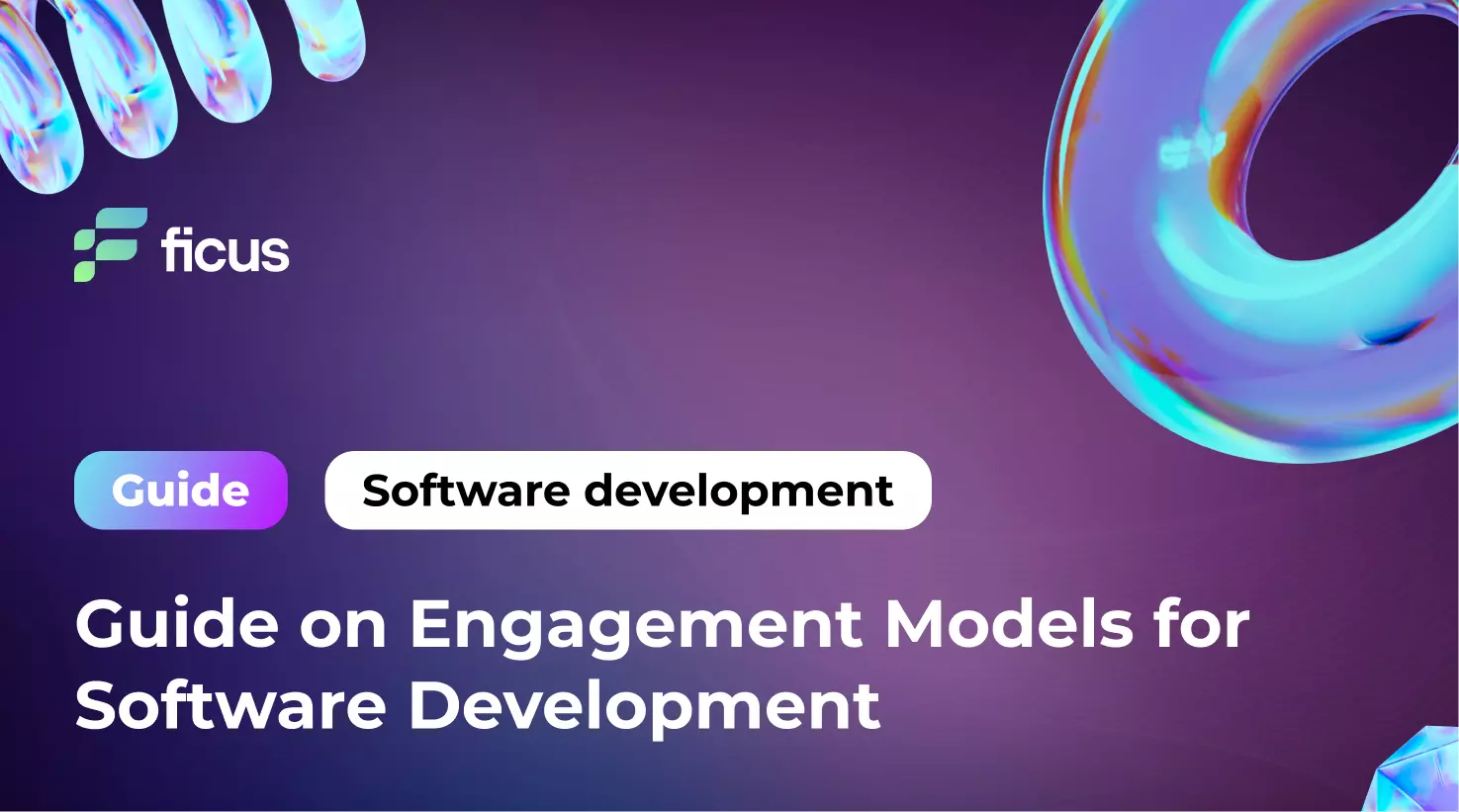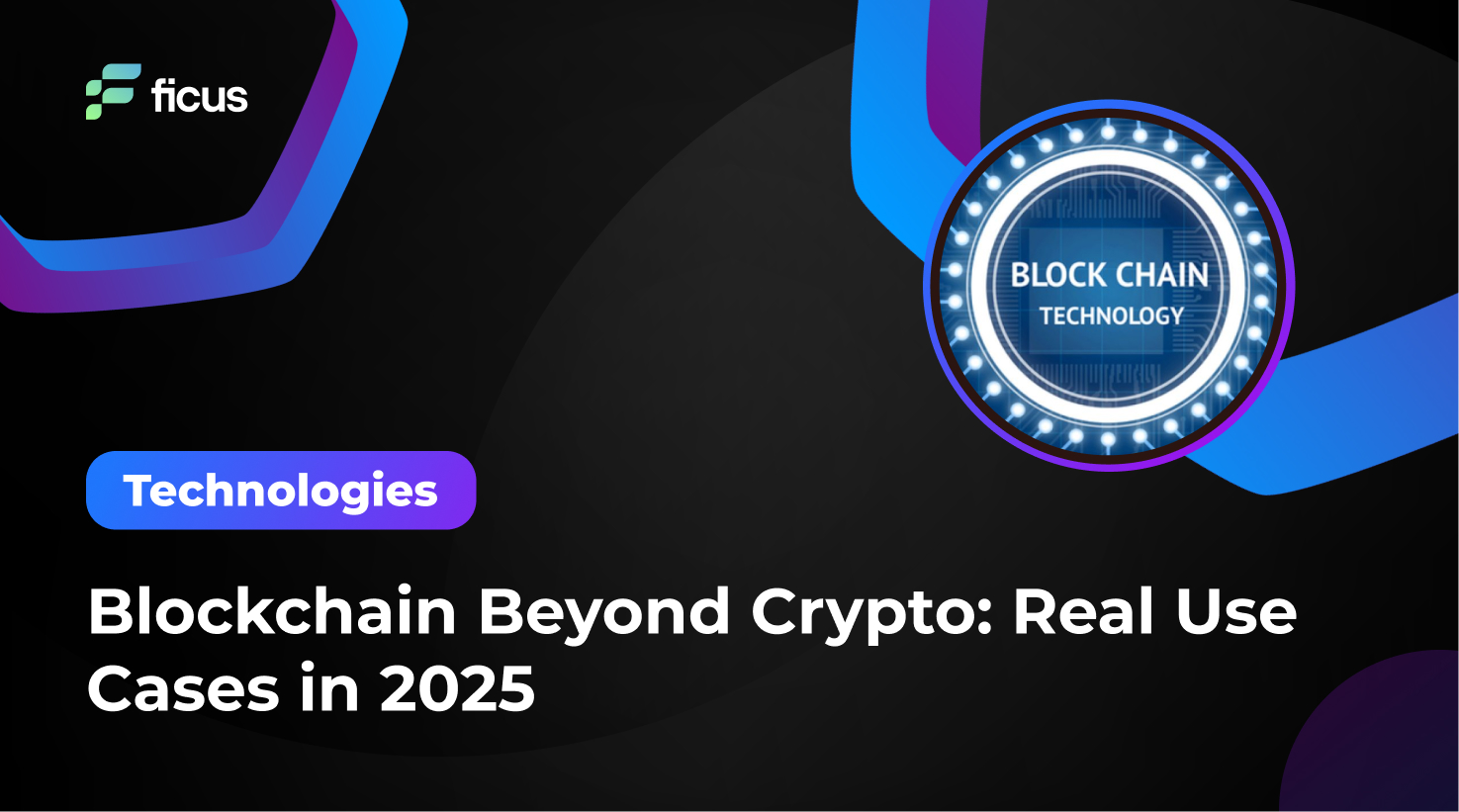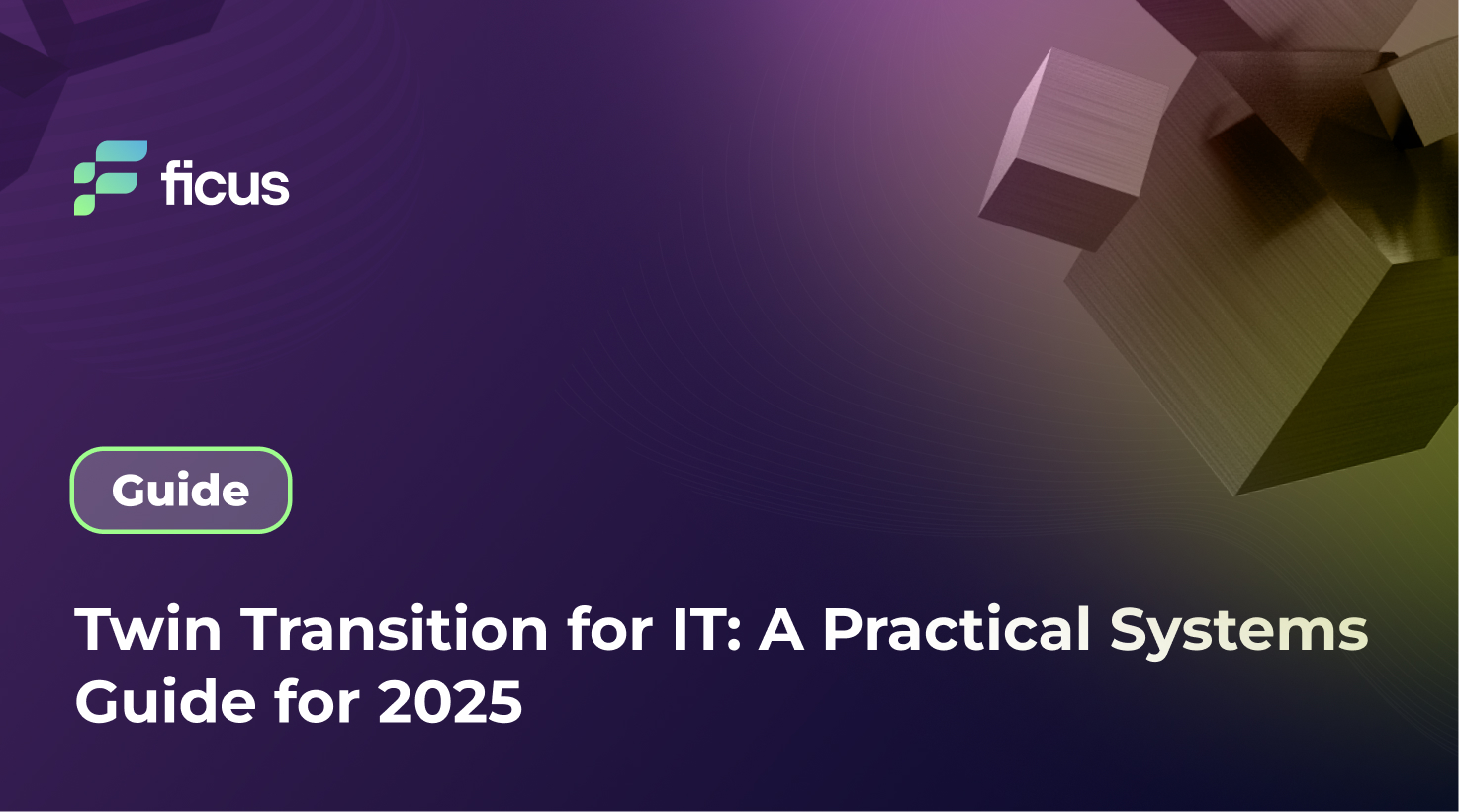Choosing the right engagement model for software development significantly influences project cost efficiency, timely delivery, team effectiveness, and resource management. In a competitive market, development companies offer a range of software development engagement models to cater to client needs. Partnering with a digital agency that ensures quality and transparency throughout the development process is essential. Failing to select a suitable engagement model can lead to unnecessary expenses. Organizations must understand the concept of software development engagement models, their advantages over traditional hiring methods, and how to choose the right model for a particular project.
Overlooking the step of choosing a suitable engagement model for software development often results in excessive costs. This guide explores the strategic aspects of software development engagement models, providing insights tailored specifically for large enterprises. By grasping the intricacies of each model, businesses can make informed decisions that align with their objectives, ensuring that their software development process is efficient, cost-effective, and delivers high-quality outcomes. Whether your goal is to optimize resource management, control the development process, or ensure timely product delivery, this article will guide you through the complexities of selecting the right engagement model.
- Various models offer flexibility, cost-efficiency, and quality assurance.
- The right model choice is crucial for project success, efficiency, and alignment.
- Factors: project scope, budget, timeline, and required flexibility guide selection.
What are Engagement Models for Software Development?
Engagement models in software development are structured approaches that define the interaction between a client and a software development company. These models serve as a blueprint for how the project will be executed, from initial planning through to delivery and beyond. They specify the level of involvement and control that the client has over the project, the responsibilities of the development team, and the allocation of resources throughout the software development lifecycle.
Each engagement model dictates different elements of the project, including communication protocols, decision-making authority, and risk management strategies. The choice of an engagement model is crucial, as it directly impacts the project’s cost efficiency, timeline, and overall success. It also influences the flexibility and scalability of the project, affecting how easily the team can adapt to changes in scope or requirements. Furthermore, the engagement model determines how closely the development team will work with the client, whether the client will have direct oversight of the development process, and the degree of transparency expected throughout the project.

Benefits of Software Development Engagement Models
- Clear Framework for Collaboration: Structured engagement models provide a well-defined framework, setting clear roles, responsibilities, and expectations, which facilitates smooth communication and an efficient workflow.
- Customization for Project Needs: These models allow businesses to choose the best fit for their project’s size, complexity, and specific requirements, ensuring appropriate resource allocation and adherence to timelines.
- Improved Project Outcomes: Strategic use of these models helps in avoiding pitfalls like scope creep and budget overruns by clearly defining the project’s scope, budget, and timeline.
- Enhanced Efficiency: Engagement models ensure alignment between the client and the development team on project goals and deliverables, enhancing overall efficiency.
- Flexibility and Control: Different models, such as fixed-price or dedicated team models, offer varying levels of budget control and flexibility, catering to different project needs.
- Alignment with Business Goals: A well-chosen engagement model ensures that the final software product aligns with the business’s goals, delivering both value and quality.
Software development is technical activity conducted by human beings.
Niklaus Wirth
Common Challenges in Engagement Models
Misalignment of Expectations
One of the most significant challenges in any engagement model for software development is the misalignment of expectations between the client and the vendor. When there is a disconnect regarding the project’s goals, scope, or deliverables, it can lead to frustration, delays, and even project failure. To mitigate this risk, it’s crucial to establish clear communication from the start. Both parties need to have aligned expectations, which involve detailed discussions during the planning phase, setting realistic milestones, and choosing an engagement model that fosters transparency and collaboration throughout the project lifecycle.
Budget Overruns
Budget overruns are a frequent issue in software development, often arising from inadequate planning or unexpected changes in project scope. Selecting the appropriate engagement model for software development is key to managing this risk. For projects with well-defined requirements, a fixed-price model is beneficial as it establishes a clear budget upfront. However, for projects with complex or evolving needs, a time-and-materials model or a dedicated team approach might be more suitable, offering flexibility while helping to control costs. Regular budget reviews and a strong emphasis on scope management can also play a significant role in preventing overruns.
Scope Creep
Scope creep occurs when additional features or changes are introduced to a project without proper evaluation or adjustment to the timeline and budget. This can lead to delays, increased costs, and a diluted focus on the core objectives. Managing scope creep effectively requires a disciplined approach to change management, where all requests for changes are carefully assessed in terms of their impact on the project. Different engagement models offer varying levels of flexibility in handling scope changes; for example, an agile model allows for iterative development and regular reassessment of priorities, making it easier to incorporate changes without derailing the project. Clear documentation and agreement on the project’s scope from the beginning are essential to minimize the risk of scope creep.
Types of Engagement Models
Engagement models are diverse, each designed to cater to specific project requirements, timelines, budgets, and levels of control. Selecting the right model depends on a business’s unique needs and the nature of the software development project. Whether a company requires a high level of flexibility, strict budget controls, or specialized expertise, there is an engagement model that can align with its strategic goals. Below, we explore various engagement models, outlining their definitions, benefits, and potential challenges to help you make an informed decision.
Fixed Price-Based Model
The Fixed Price-Based Model is a contractual agreement where the scope, budget, and timeline of a project are determined upfront. This approach ensures that both the client and vendor have a clear understanding of the project’s requirements from the beginning. Once the terms are set, the agreed-upon price remains fixed, regardless of the time and resources ultimately needed to complete the project. This model is particularly effective for projects with well-defined objectives and minimal expected changes, providing predictability and stability for both parties.
Pros:
- Budget Predictability: Since the price is fixed, businesses can plan their budgets with confidence, knowing there will be no unexpected costs.
- Reduced Risk: The vendor bears the risk of any additional work required to meet the project’s specifications within the agreed budget.
Cons:
- Less Flexibility: There is limited room for changes once the project scope is set, which can be problematic if requirements evolve.
- Quality Concerns: To stay within budget, vendors might cut corners, potentially affecting the quality of the final product.
Time and Resource-Based Model
The Time and Resource-Based Model, also known as the Time and Material Model, is an engagement model where the client pays for the time spent by the development team and the resources used during the project. This model is ideal for projects with evolving requirements or those where the scope cannot be fully defined at the outset.
Pros:
- Flexibility: Clients can make adjustments to the project scope as it progresses, allowing for greater adaptability to changing needs.
- Transparency: The client has visibility into how time and resources are allocated, ensuring they pay only for what is used.
Cons:
- Potential for Cost Overruns: Without a fixed budget, costs can spiral if the project takes longer or requires more resources than initially anticipated.
- Management Overhead: The client needs to be actively involved in managing the project to keep it on track and within budget.
The Service Level Agreement (SLA)/Milestone-Based Model
The SLA/Milestone-Based Model is an engagement approach where the project is divided into phases or milestones, each with specific deliverables and timelines. Payments are tied to the successful completion of these milestones, ensuring that progress is regularly monitored and aligned with the agreed-upon Service Level Agreements (SLAs).
Pros:
- Clear Progress Tracking: Regular milestones provide clear checkpoints for assessing progress and making necessary adjustments.
- Risk Mitigation: By breaking the project into smaller, manageable phases, risks are identified and addressed early.
Cons:
- Complexity in Setting Milestones: Defining precise milestones that are achievable yet challenging can be complex and time-consuming.
- Potential for Delays: If one milestone is delayed, it can have a cascading effect on subsequent phases, potentially derailing the entire project timeline.
Dedicated Team Model
The Dedicated Team Model involves hiring a team of developers who work exclusively on the client’s project. This team acts as an extension of the client’s in-house team, often working remotely but fully integrated into the client’s processes and culture.
Pros:
- Expertise and Team Consistency: The dedicated team becomes deeply familiar with the project, offering specialized expertise and consistent work quality.
- Flexibility: The team can be scaled up or down based on the project’s needs, allowing for agile development.
Cons:
- Potentially Higher Costs: Maintaining a dedicated team can be more expensive than other models, particularly for long-term projects.
- Management Responsibility: The client needs to be heavily involved in managing the team to ensure alignment with business objectives.
Hybrid (Onshore-Offshore) Model
The Hybrid Model combines the strengths of both onshore and offshore development teams. In this model, critical activities such as project management and strategic planning are handled by an onshore team, while development and technical tasks are outsourced to an offshore team.
Pros:
- Cost Efficiency: By leveraging offshore resources, companies can reduce development costs while maintaining high-quality standards.
- Round-the-Clock Development: With teams in different time zones, development can continue almost 24/7, speeding up project delivery.
Cons:
- Communication Barriers: Working across different time zones and cultural contexts can lead to communication challenges, requiring robust processes to ensure effective collaboration.
- Coordination Complexity: Managing a distributed team requires careful coordination to avoid delays and miscommunications.
Offshore Development Center
The Offshore Development Center (ODC) model involves setting up a dedicated team in a foreign country to handle software development tasks. This team works exclusively for the client, often operating as a subsidiary or an extension of the client’s business.
Pros:
- Cost Savings: Labor costs in offshore locations are typically lower, offering significant savings on development expenses.
- Access to Global Talent: Companies can tap into a broader talent pool, hiring experts who may not be available locally.
Cons:
- Time Zone Differences: Working across different time zones can complicate communication and coordination, potentially slowing down the project.
- Cultural Differences: Differences in work culture and business practices can lead to misunderstandings and conflicts if not managed effectively.
IT Staff Augmentation
IT Staff Augmentation is an engagement model where businesses supplement their in-house teams with external developers or technical experts. This model allows companies to quickly scale their teams with specialized talent to meet project demands without long-term commitments.
Pros:
- Rapid Scaling: Companies can quickly add skilled personnel to their teams, allowing them to meet tight deadlines or handle complex tasks.
- Flexibility: Businesses can adjust the size of their teams as project needs change, ensuring optimal resource utilization.
Cons:
- Integration Challenges: Bringing in external staff can lead to integration challenges, as new team members may require time to adapt to the company’s processes and culture.
- Short-Term Focus: This model is often best suited for short-term needs, as long-term use can become costly and may affect team cohesion.
Managed Services
Managed Services is an engagement model where a vendor takes full responsibility for managing and delivering specific IT services. The vendor handles everything from planning and execution to maintenance, allowing the client to focus on core business activities.
Pros:
- Reduced Management Burden: The client can offload the management of specific IT functions to the vendor, freeing up internal resources to focus on strategic initiatives.
- Predictable Costs: Managed services often come with a fixed fee, making it easier to predict and manage IT expenses.
Cons:
- Less Control: By outsourcing the management of IT services, the client may have less control over how these services are delivered and maintained.
Dependency on the Vendor: Relying heavily on a single vendor for critical IT services can lead to dependency, making it difficult to switch providers if issues arise.
Ready to find the perfect engagement model for your project?
Contact UsHigh-Touch Onboarding and Low-Touch Onboarding
High-touch onboarding involves a hands-on approach where the client and vendor work closely together during the initial phases of the engagement. This method is ideal for complex projects that require detailed planning and alignment between both parties. In contrast, Low-Touch Onboarding is a more streamlined approach, where the client and vendor have minimal interaction, suitable for simpler projects with clearly defined requirements.
Which Types of Engagement Models Are Suited for Each Onboarding Strategy?
- High-Touch Onboarding: This approach is best suited for engagement models such as the Dedicated Team Model, SLA/Milestone-Based Model, and Hybrid Model, where close collaboration and continuous communication are critical for success.
- Low-Touch Onboarding: Engagement models like the Fixed Price-Based Model and Managed Services are better suited for Low-Touch Onboarding, as these models typically involve well-defined scopes and require less ongoing interaction between the client and vendor.
How to Choose the Right Engagement Model
Selecting the right engagement model for software development is a critical decision that can greatly influence the success of your project. This choice requires a deep understanding of your project’s scope, budget, timeline, and long-term business goals. By aligning these factors with the strengths of various engagement models, you can ensure that your project is completed on time, within budget, and in line with your company’s strategic objectives.
Project Scope and Requirements
Clearly defining your project’s scope and requirements is the first step in choosing the right engagement model. The scope should detail what the project aims to achieve, including specific deliverables, features, and functionalities.
- Importance: A well-defined scope helps prevent scope creep, ensures that all stakeholders have a shared understanding of the project, and allows for more accurate cost and time estimations.
- Model Alignment: For projects with a well-defined scope and minimal expected changes, a Fixed Price-Based Model may be ideal. However, if the scope is likely to evolve, a Time and Resource-Based Model or a Dedicated Team Model may offer the necessary flexibility.
Budget Constraints
Your budget plays a significant role in determining the most suitable engagement model for software development. Different models offer varying levels of cost predictability and flexibility.
- Budget Considerations: It’s essential to balance cost-effectiveness with the need for quality and flexibility. Understand the total cost of ownership, including potential overruns and hidden expenses.
- Model Alignment:
- If strict budget controls are necessary, a Fixed Price-Based Model offers predictability.
- For projects where flexibility is more critical, a Time and Resource-Based Model might be more appropriate, albeit with a higher risk of cost overruns.
- A Dedicated Team Model or Offshore Development Center might be suitable if ongoing support and continuous development are required, despite potentially higher upfront costs.
Timeline and Deadlines
The timeline for your project, including any critical deadlines, should be a major consideration when selecting an engagement model.
- Significance: Effective time management ensures that the project is completed on schedule, avoiding costly delays that can impact your business operations.
- Model Alignment:
- For projects with tight deadlines, the SLA/Milestone-Based Model is beneficial as it provides regular progress checks and clear deadlines for each phase.
- The Hybrid Model can expedite delivery through round-the-clock development, leveraging different time zones.
- If flexibility is needed to adjust timelines as the project progresses, the Time and Resource-Based Model may be the best fit.
Business Goals and Long-term Vision
The chosen engagement model should align with your company’s strategic goals and support its long-term vision. Consider how the model will contribute to your business growth, scalability, and adaptability in the future.
- Strategic Alignment: The engagement model should not only meet immediate project needs but also position your company for future success, whether through scalable solutions, long-term partnerships, or the ability to quickly adapt to market changes.
- Model Alignment:
- A Dedicated Team Model might be ideal for companies seeking to build long-term, in-depth expertise and consistency in their projects.
- Managed Services can support ongoing operational efficiency, allowing your company to focus on strategic initiatives.
- If your goal is to maintain flexibility while scaling your operations, IT Staff Augmentation can provide the ability to quickly adjust your team size and expertise as needed.
Choosing the right engagement model involves a careful analysis of these factors to ensure that the project not only meets immediate objectives but also supports your company’s growth and strategic direction in the long run.
How Ficus Technologies Can Help
Ficus Technologies is here to guide you every step of the way in choosing the right engagement model for software development. With a deep understanding of various engagement models and extensive experience in delivering successful software solutions, Ficus Technologies tailors its approach to meet your specific project requirements and business objectives.
- Tailored Engagement Models: Ficus Technologies offers a range of customizable engagement models designed to fit the unique needs of your project. Whether you require a dedicated team for long-term collaboration or need to augment your existing team with skilled professionals, Ficus Technologies can provide the expertise and resources necessary to achieve your goals using the most suitable engagement model for software development.
- Expert Guidance: Ficus Technologies’ experts work closely with you to understand your business goals, budget, and project timeline, helping you select the most appropriate engagement model. Their personalized approach ensures that your project is completed on time within budget and aligned with your long-term vision.
By partnering with Ficus Technologies, you can rest assured that your software development project is in capable hands. Their commitment to delivering high-quality solutions and ability to adapt to your needs makes them the ideal partner for your next project.
For more information on how the company can help you, please get in touch with the team on their website Ficus Technologies Contact.
Final Words
Selecting the appropriate engagement model for software development directly impacts project cost efficiency, timely delivery, optimal team utilization, and resource allocation. With the competitive landscape of development companies, they offer diverse software development engagement models to meet client needs. A digital partner ensuring quality and transparency throughout the development process is crucial. Overlooking the step of choosing a suitable engagement model for software development often results in excessive costs. Organizations need to grasp the concept of engagement models in software development, their benefits over conventional hiring methods, and the process of selecting the right model for a specific project.
Choosing between outstaffing and a dedicated development team depends on your project’s needs and management preferences. Outstaffing is ideal when you need to temporarily expand your team with specific skills without the overhead of hiring. It allows for more direct control over individual contributors. On the other hand, a dedicated development team is a fully managed team provided by a vendor, which is best for long-term projects requiring deep, ongoing involvement. This option offers a hands-off approach for clients, as the vendor manages the team’s operations. Both models enhance your capabilities but cater to different degrees of involvement and project durations.
The choice between Time and Materials (T&M) and Fixed Price models hinges on project scope clarity and flexibility needs. T&M offers flexibility, allowing adjustments to scope and requirements during the project, making it suitable for complex or evolving projects. It’s ideal when project parameters are not fully defined at the start. Fixed Price, conversely, is best for projects with well-defined scopes and deliverables, offering budget certainty and minimizing financial risk. However, any changes or additional features can result in renegotiations and extra costs. Ultimately, T&M prioritizes flexibility and adaptability, while Fixed Price emphasizes budget control and predictability.
The cost-effectiveness of an engagement model varies based on the specific needs and characteristics of your project. Generally, the Fixed Price-Based Model is considered the most cost-effective when the project scope is well-defined and unlikely to change. This model provides a clear, upfront cost, which helps manage the budget and prevent overruns. However, if your project is likely to evolve or require adjustments, the Time and Resource-Based Model might offer more flexibility, though it can lead to higher costs if not carefully managed. Additionally, the Hybrid Model (combining onshore and offshore teams) or the Offshore Development Center can also be cost-effective by leveraging different geographical advantages, though these models require careful management to address potential communication and time zone challenges.
Yes, combining different engagement models can be an effective way to address various aspects of your project. For instance, you might use a Time and Resource-Based Model for parts of the project where flexibility is needed while applying a Fixed Price-Based Model for more well-defined components to control costs. Another approach could involve using a Dedicated Team Model for ongoing development efforts and Managed Services for specific tasks or high-priority needs. This combination can help optimize both cost and efficiency, but it requires careful planning and clear communication with your development partner to ensure that the chosen models align with your overall project goals.








